There are numberless great poems about literal Hell, but few worth a damn about malls and a total of zero about the underground city beneath the streets of downtown Montreal. This thirty-three kilometer sort of circle of interconnected shopping centers (official called the RÉSO although we have never heard a soul refer to it as such) is advertised on tourism sites and listicle farms as “one of the city’s top attractions,” but neither we nor anyone we have ever known has deliberately or meaningfully spent time down there. This disparity between how a place is sold to visitors and how it is understood by residents was intriguing to us.
We checked out some reviews on TripAdvisor to get a fuller sense of what folks thought about the subterranean commerce labyrinth. The responses were, as you might expect, divided. Some - like Paul from the UK - considered it a “fantastic system and worth exploring” whereas others - like Craig from Massachusetts - found that “there’s little reason to be there.” The internet remains a helpful resource.
After sifting through weirdly effusive positive reviews and shockingly angry negative ones, we happened upon someone from Toronto with an avatar from The Incredibles. They “found this place out of proportion with anything on a human scale.” This description is eerily and excitingly similar to how Kant talks about experiences of the sublime. This was all we needed. Eager for a metaphysically significant experience, we began our trek to the underground city and downloaded an inscrutable map on the way.
As you might be able to discern from that chaos of colors and lines, there’s no real entrance to the underground city. There also isn’t any meaningful signage anywhere alerting you to its existence - not even a courtesy “ABANDON HOPE ALL YE WHO ENTER HERE” - so we arbitrarily entered a building on the network (Complexe Guy-Favreau) and looked for a way down.
It didn’t take long to stumble across a downward passage. It was less auspicious than we were expecting.
The overturned box in the path was strangely comforting (people had been here probably) and disquieting (why is there a box here, how long has it been here, what did it contain, were we meant to bring our own boxes?). A little trepredatious now, but we ventured forth anyways.
Were we now in the underground city? Who’s to say? We were underground and, as far as we could tell, technically still in the city of Montreal. This was all that mattered. No one said that a “top attraction” or encounter with the sublime would be immediate or effortless. Wanting the complete sensory experience, we took off our headphones. It was more or less silent. The faint whir of a heating system or some kind of industrial something persisted in the background, but no music, muzak, public service announcements, or advertising jingles were piped in. It was just quiet. We could mostly only hear ourselves. We thought about testing for an echo, but were too shy.
It would be a lie to say we weren’t concerned. Even at this early point on our journey, there should have been people, no? Apparently half a million commuters use the underground city every day, but none of them were here. Had we slipped into the world of The Backrooms? Would we now be forced to talk about liminal spaces? Did we need to pull up that article on heterotopias by Foucault that everyone cites? Or, worse, consult Jameson’s Postmodernism, or The Cultural Logic of Late Capitalism? We thought about turning around, but a figure off in the distance suggested that maybe we were just on the cusp of truly encountering the sublime attractions of the underground city.
No such luck. The figure had ended up god knows where by the time we got through those doors. Despite the fact that it was nearing rush hour, it was still silent and still abandoned. Maybe, then, this adventure was of an existential variety. We wouldn’t find exciting tourist attractions, fancy shops, or the Kantian sublime - but rather find out something about ourselves, about who we really are deep down. “Not till we are lost [...] not till we have lost the world, do we begin to find ourselves, and realize where we are and the infinite extent of our relations,” Thoreau writes in Walden. The thing of it is, though, that we were not really lost at any point. We knew well enough that a metro station, mall, or office building was never far away. We were disoriented, sure, but what did orientation matter really? There was only forwards or backwards. With only two options, the decision was hardly vexing. We carried on.
This city may have been unpopulated, but it was not without workers. Given that the floor this man was cleaning was (to our untrained eye) already quite clean, we wondered whether he had been condemned by the gods like Sisyphus to toil ceaselessly without satisfaction. We then wondered whether there was much of a difference between the outsize mythical punishments you read about in classic texts and the mundane labor that the vast majority of us need to complete to earn even the humblest of paychecks. We didn’t like wondering about this for very long, so we picked up our pace in the hopes that maybe a musician or a juggler or really literally anyone or anything would be around the corner to distract us.
Still nothing. Just blank walls and concrete. It occurred to us that there was something more unusual than the lack of people or sounds going on here. There were no advertisements. There weren’t even advertisements for the possibility of advertisements. No local events, blockbuster movies, or perfumes were being presented to our eyes. Even questionable art wasn’t showcased down here. While these spaces serve, more or less, only as functional routes between commercial spaces - they are weirdly free of any sign of commerce. Maybe this is deliberate? Like a palate cleanser as you move between malls. Even then it was strange to occupy a place that had no designs on our attention. Unlike most of the world, it wanted and expected nothing at all from us.
There was no clear reason why this atrium area was cordoned off, but we assumed that the unspoken law of above ground life (one ought not circumvent a cordon) applied underground too. We stood there for a moment and tried to imagine what possible use this space could be put to. At some point, architects and business people conspired to design this place and, it seems, decided that an empty and unused expanse was the way to go. Why sully the pure potential of empty space with anything else?
Sartre may have been right that hell is other people, but a total absence of other people isn’t exactly heaven. We saw trace evidence that people had been here, but still no actual people. An orange cone suggested more workers, but perhaps that single janitor was alone responsible for everything. The short set of stairs downwards followed immediately by a short set of stairs upwards really hammers home the entire vibe of the underground city. It seems to have been planned by no one for no one and to no end. It might, now that we think about it, simply be an elaborate art installation. We have not yet learned anything from it or felt much of anything because of it, but that might be the point.
We had spent several hours down here by now and very much wanted to leave. We needed a cigarette. We were starting to worry that a lengthy photo essay about empty spaces beneath the streets of Montreal is of very limited interest to anyone (even us). Maybe we can spice things up with some literary allusions? What about a stanza from a Wang Yin poem? In Andrea Lingenfelter’s translation, it reads:
This world is too broken to restore, and we
are here only by chance, lingering briefly in this interval
For a moment we can lose consciousness of life and death
Only the lamps of the passageway are still burning
You can infer from the fact that there are no unhoused or itinerant people anywhere that these spaces are policed and patrolled tightly, but we saw no security guards or cops and registered the black domes of security cameras on ceilings only every once in a while. Mike Davis, in City of Quartz, wrote that “contemporary architecture and the police converge most strikingly around the problem of crowd control [...] the designers of malls and pseudo-public space attack the crowd by homogenizing it. They set up architectural and semiotic barriers to filter out ‘undesirables.’ They enclose the mass that remains, directing its circulation with behaviorist ferocity.” Mission accomplished, we guess, but the underground city seems to have taken things a step further. In trying to filter out part of the population, they seem to have filtered out everyone.
During the May ‘68 strikes and unrest, activists famously used the slogan “Sous les pavés, la plage!” [Beneath the pavement, the beach!] to suggest that beneath the unyielding, governmental impositions of modern city life lay the possibility of a more natural, open-ended kind of freedom and leisure. All one had to do, then, was metaphorically get through the hard surface of things and something better would be unearthed. There was potential good beneath the bad. Half a century later we are now in a place where “sous les pavés… encore plus de pavés!” [beneath the pavement… still more pavement!].
Besides long corridors, we also ran into bizarre dead-ends fairly frequently and even spied a person in a place we had no idea how to access. Look at that guy! He doesn’t seem like he’s terribly excited to be down here, but at least we’re not alone! We wanted to talk to him, but those doors didn’t open. We doubled-back - which, you’ll be happy to learn, is still an embarrassing thing to have to do even if you’re alone - but couldn’t find him or the place where he had been and, in the process, got even more turned around. We spent possibly a full hour going around in circles and trying to find these stairways to nowhere again, but to no avail. GoogleMaps was useless as were the randomly affixed official maps. Newly upset and frustrated, we set our mind back to leaving this godforsaken set of tunnels and eventually entered a space that would have had natural light had it not, by then, gotten dark.
It crossed our minds to turn back here and re-enter the city. We had hoped, when we set out, to make fun - but there is nothing fun here. This absurd network of empty spaces used by so few with little reason isn’t really surprising, doesn’t give way to any profound insight, and did not lead us to sublimity or existential enlightenment. It’s all just unthinking waste. It’s like a parody of something, but not even a funny parody. This place isn’t hell, obviously, because there’s a purpose, import, and significance to hell. There’s probably also people there and sounds other than the lingering hum of industry.
It’s unsurprising that there are numberless great poems about literal Hell and a total of zero about the underground city, but it’s maybe worthwhile to wonder what it means that millions of dollars have been (and continue to be) spent on tens of square kilometers of land for the imagined convenience and comfort it might provide to shoppers unwilling to go outside for a moment and none of it is worth even a dirty goddamn limerick.
Bonus content for the sake of ending on a less dour/angry note: Here’s a picture we took in one of the malls and couldn’t figure out how to fit it into the above.





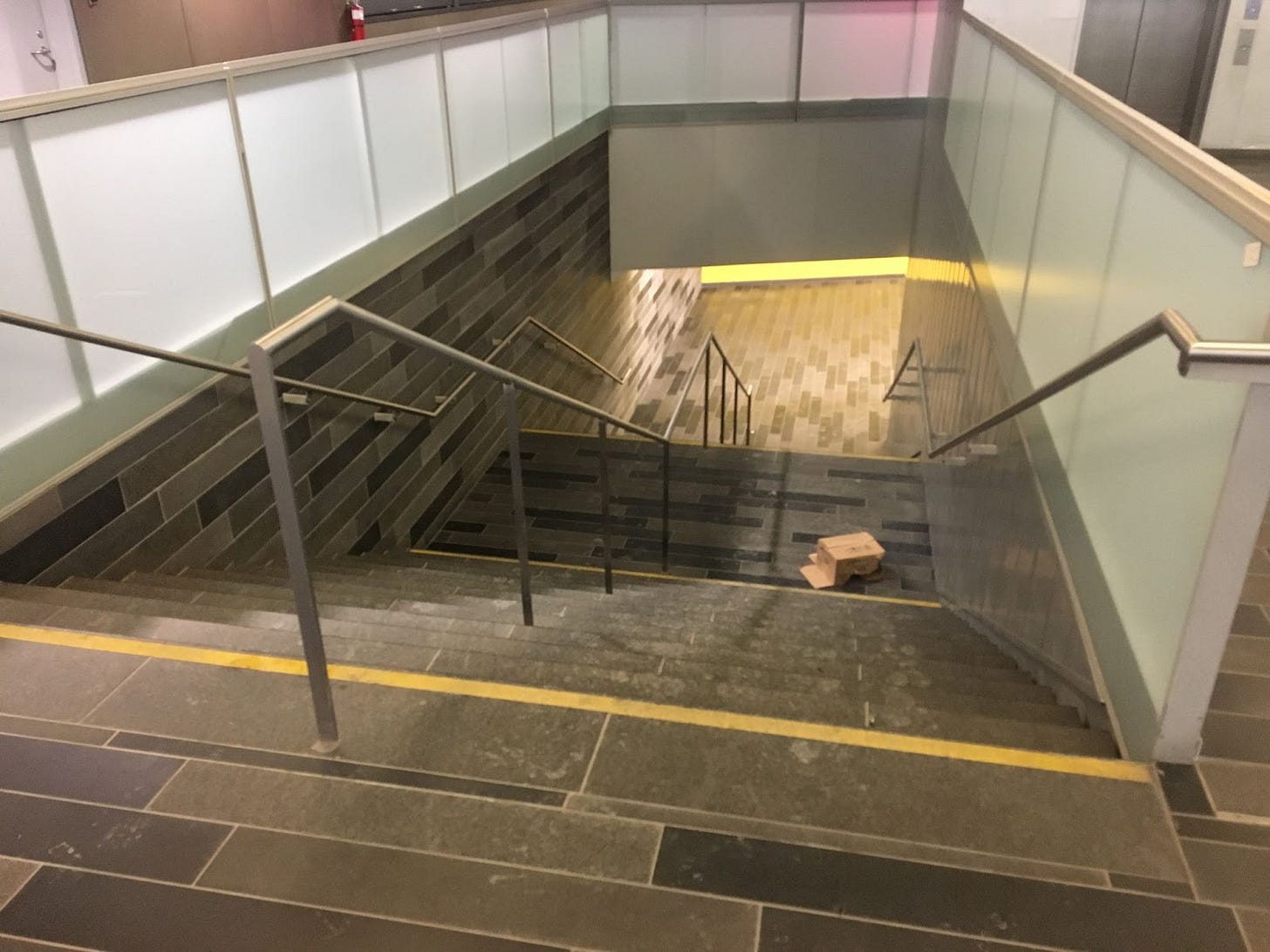
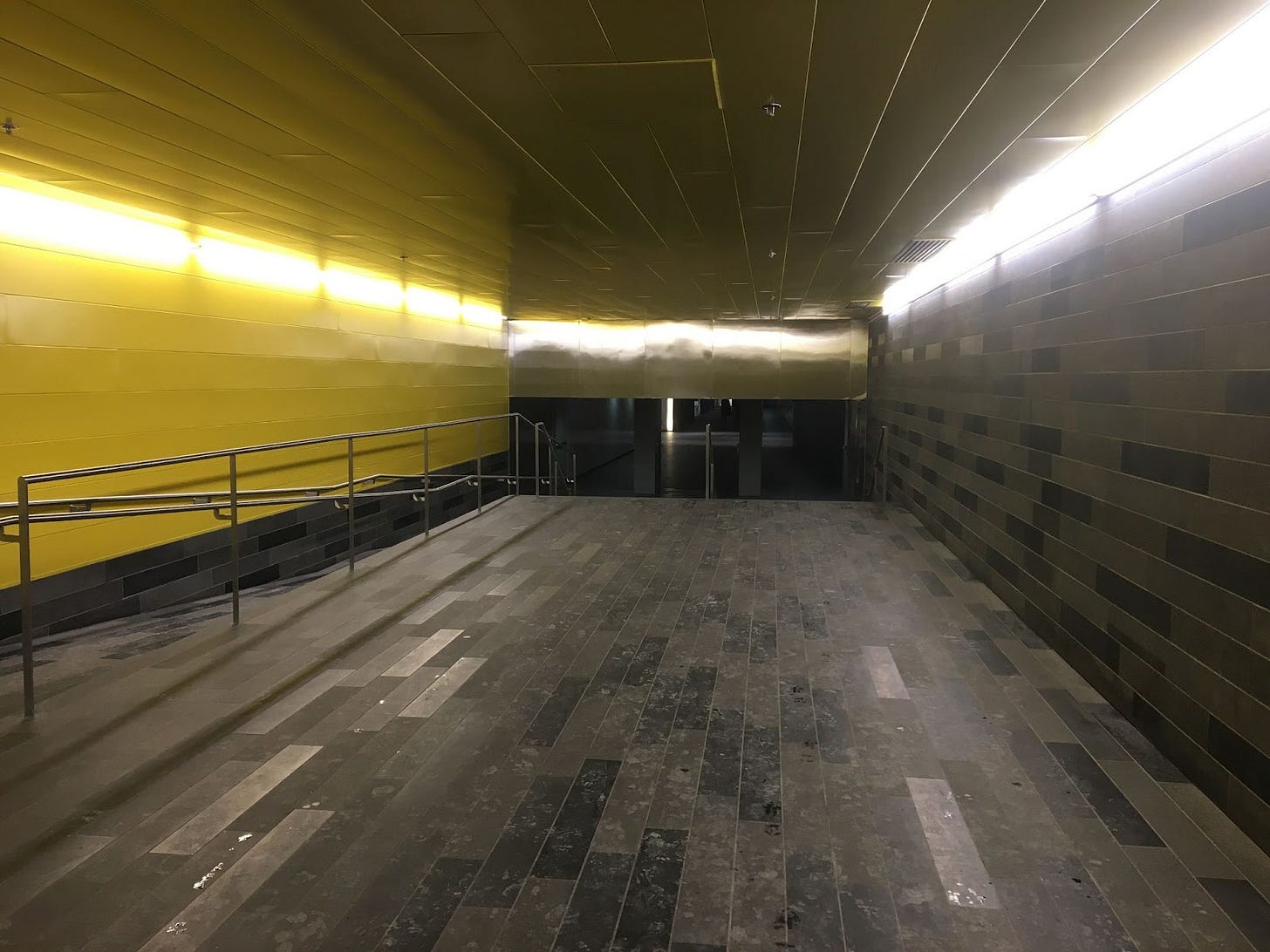

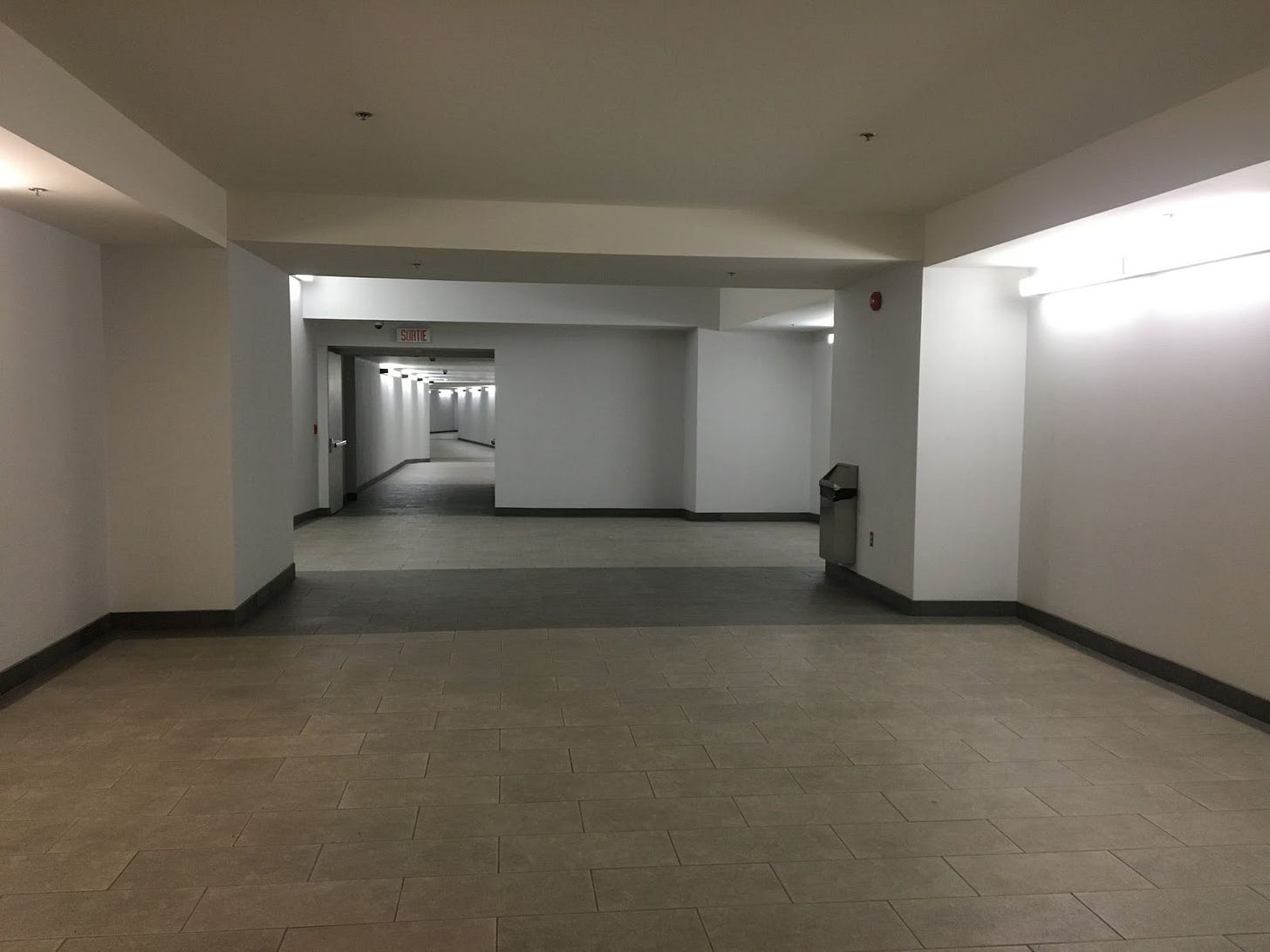
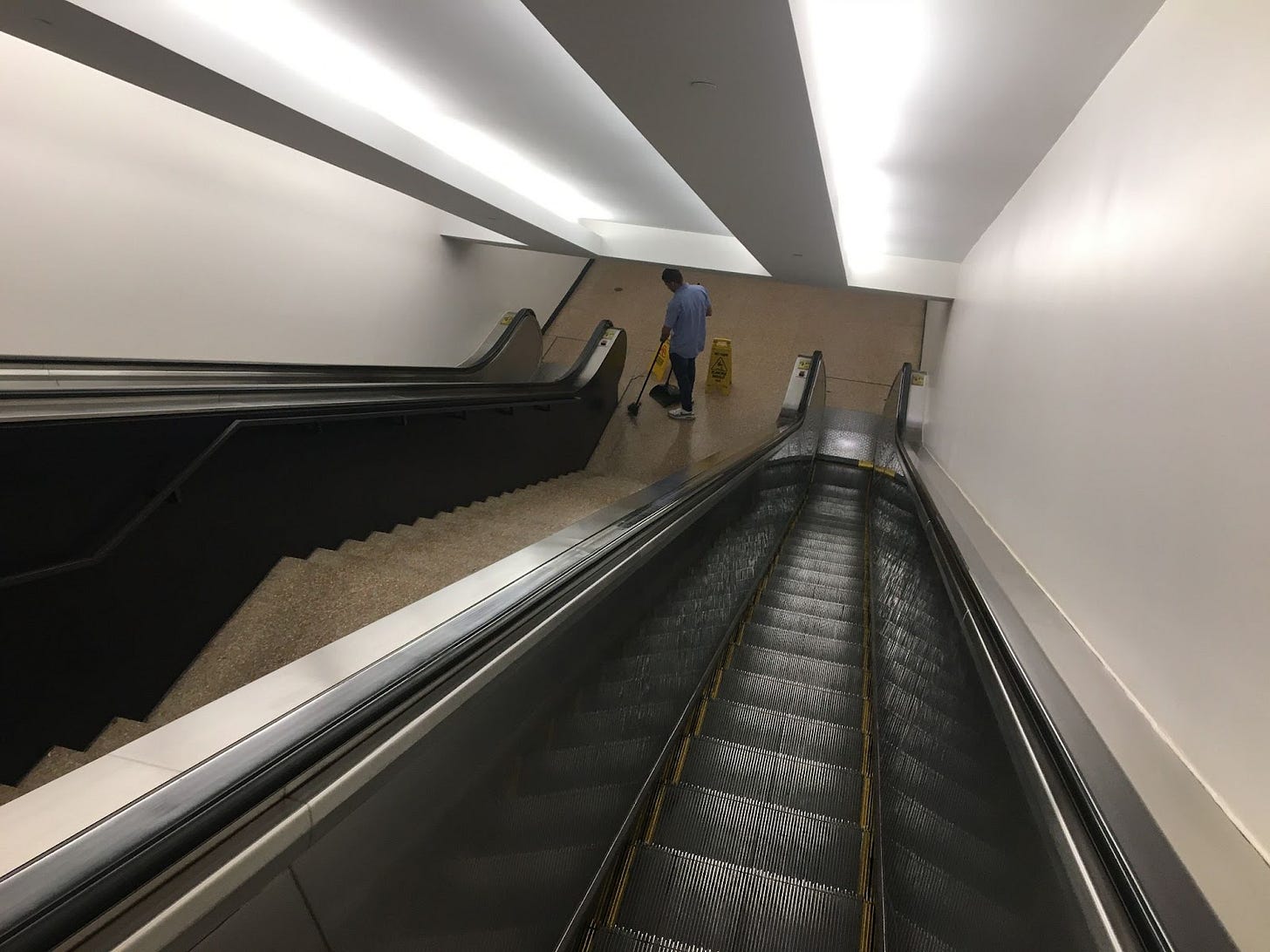
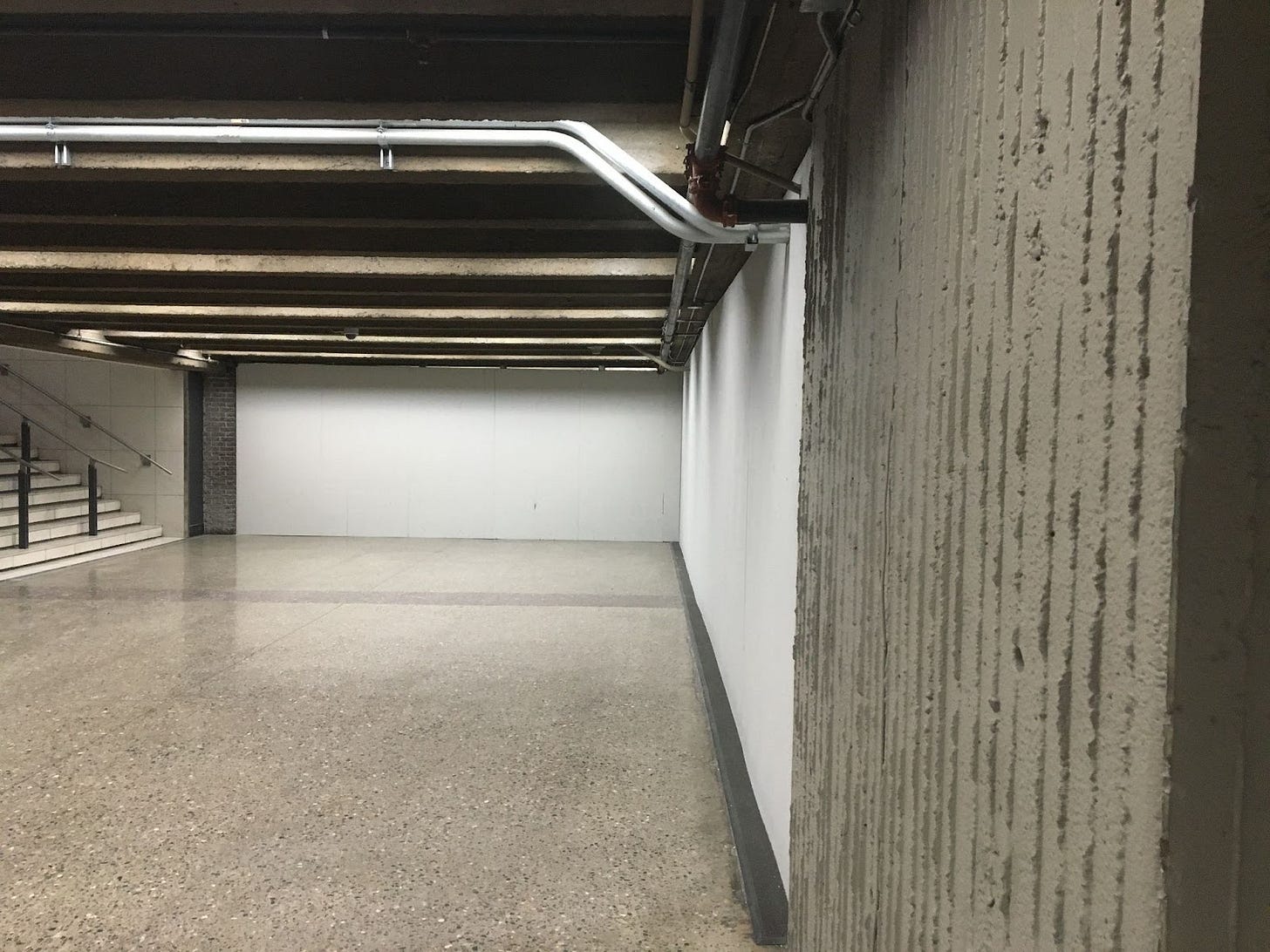
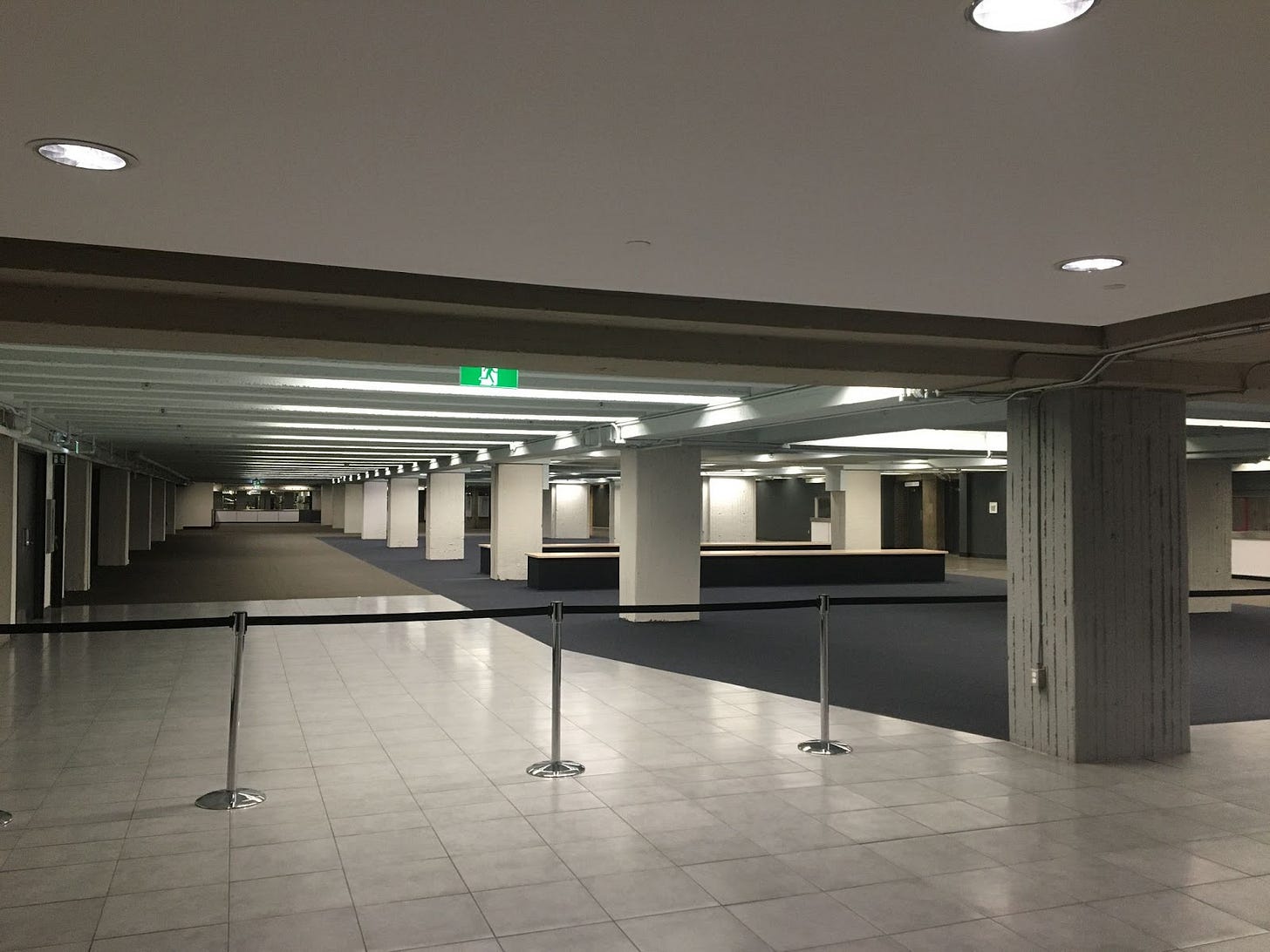
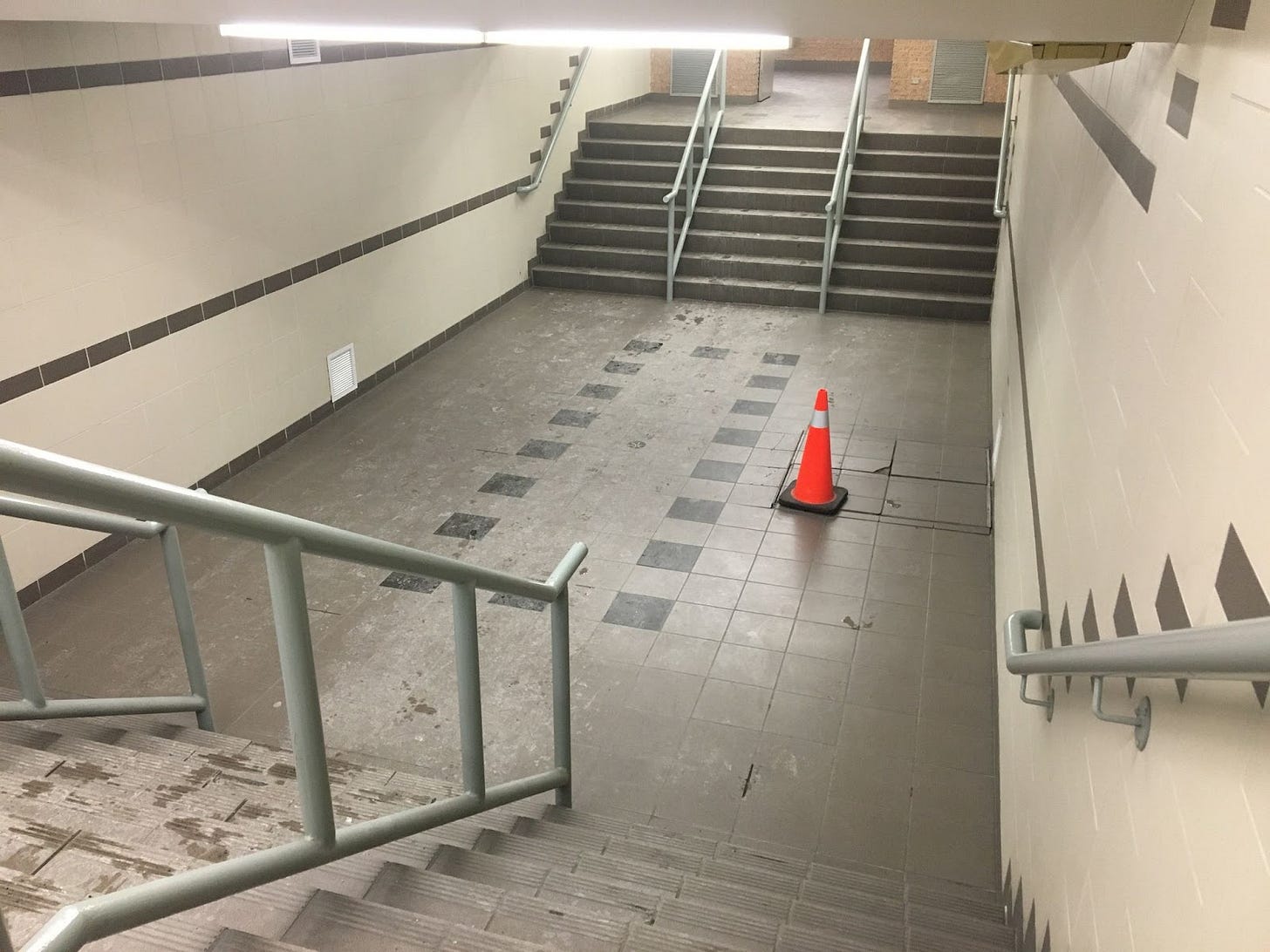
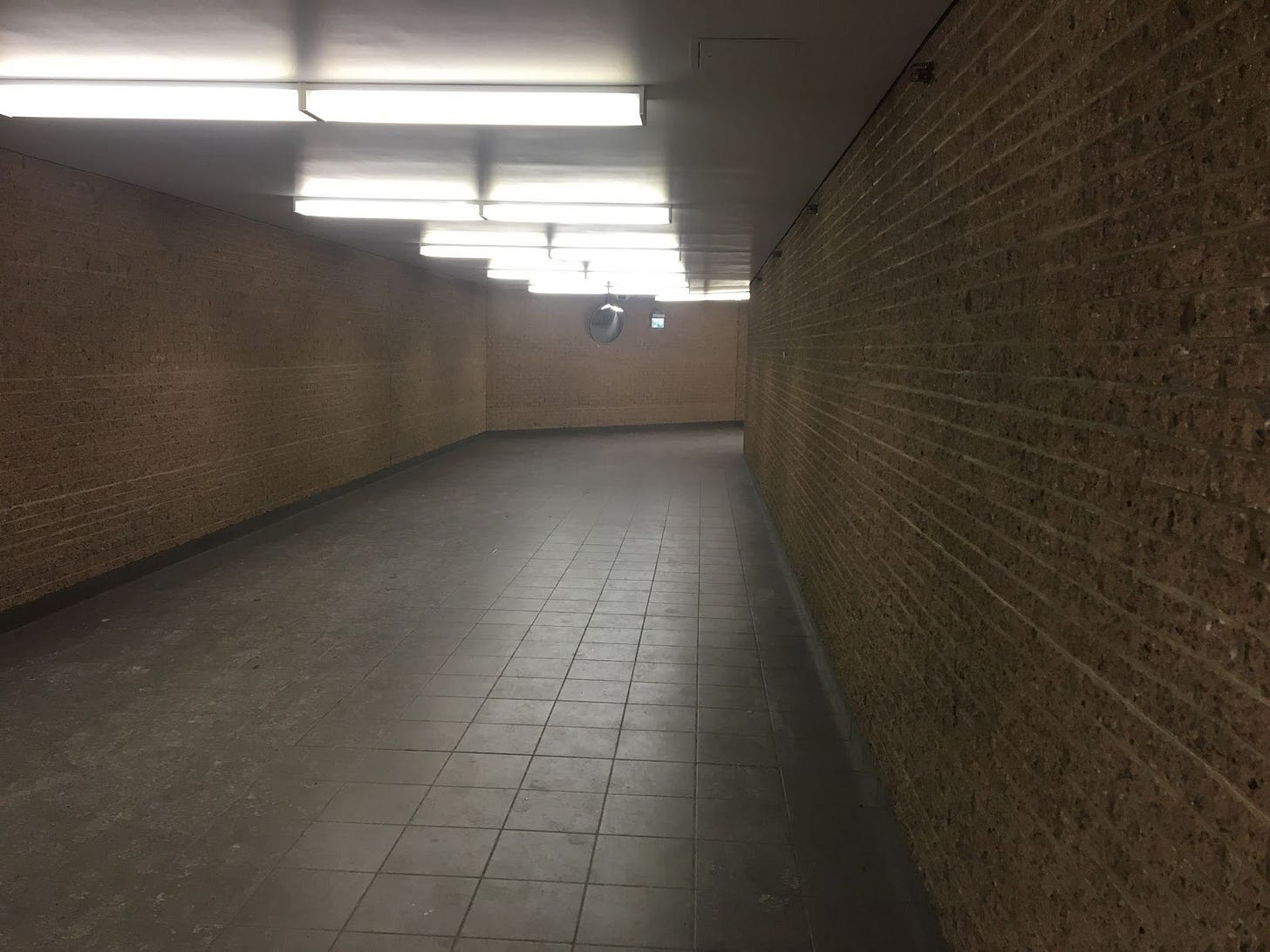
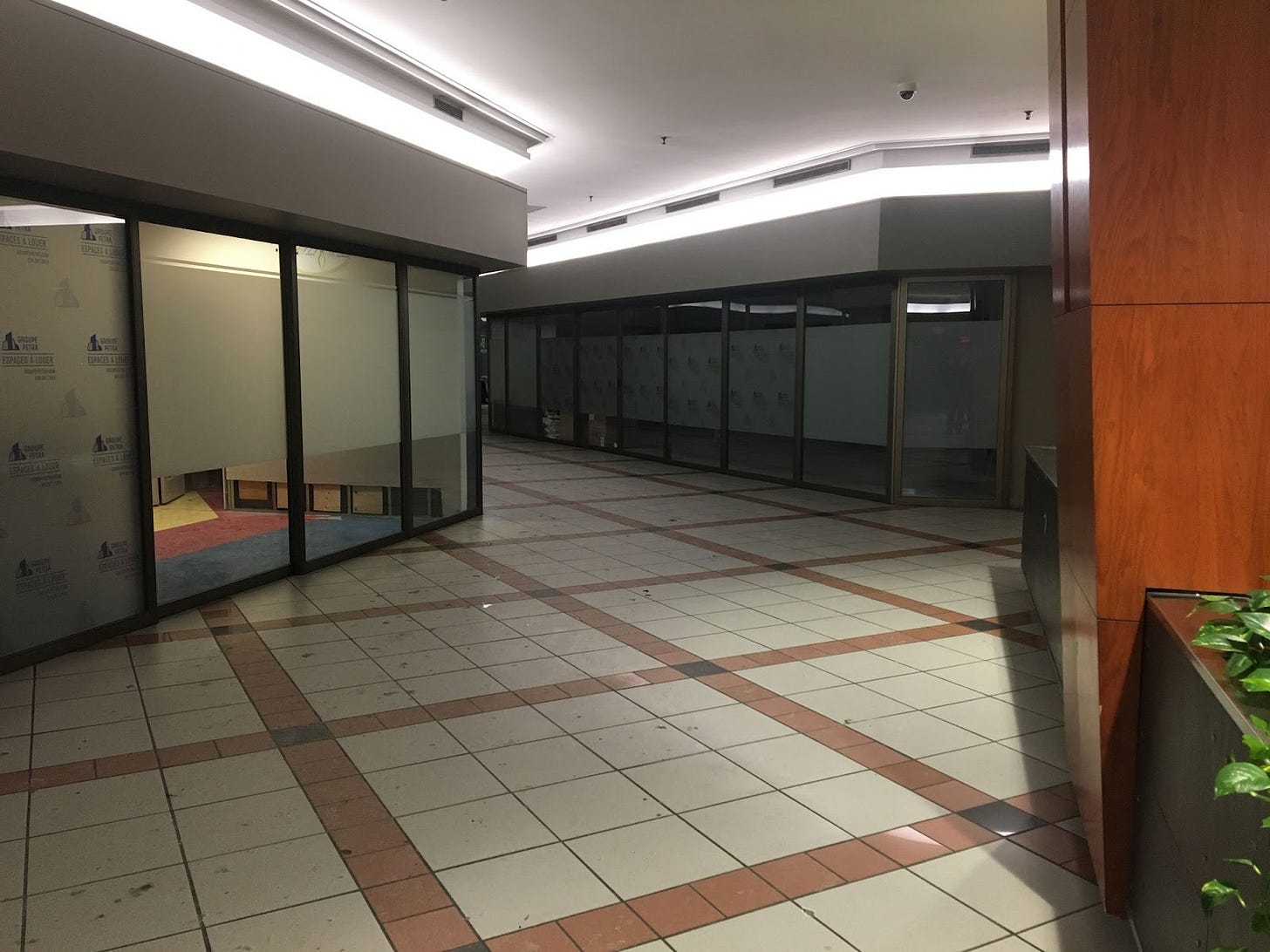
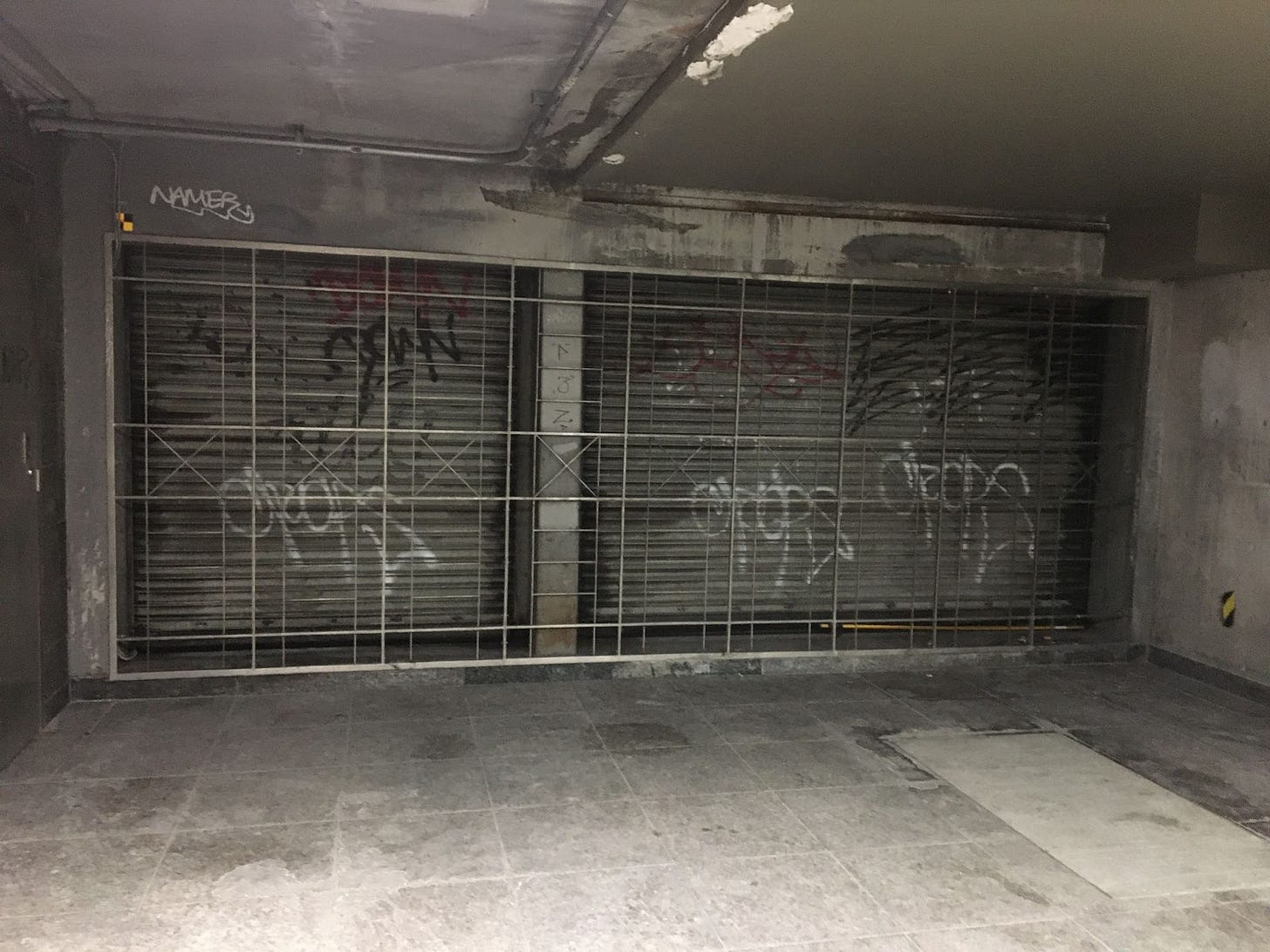
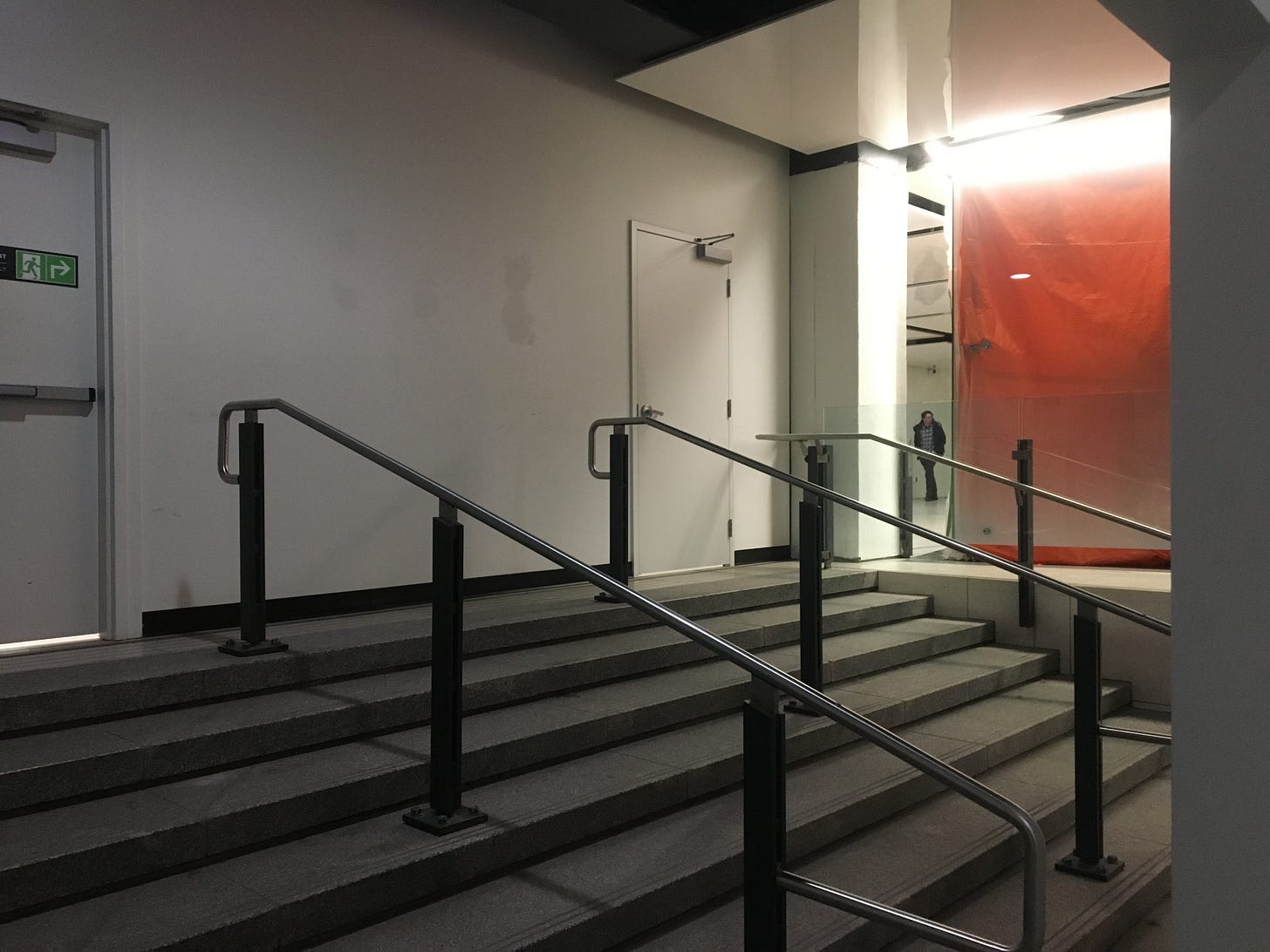
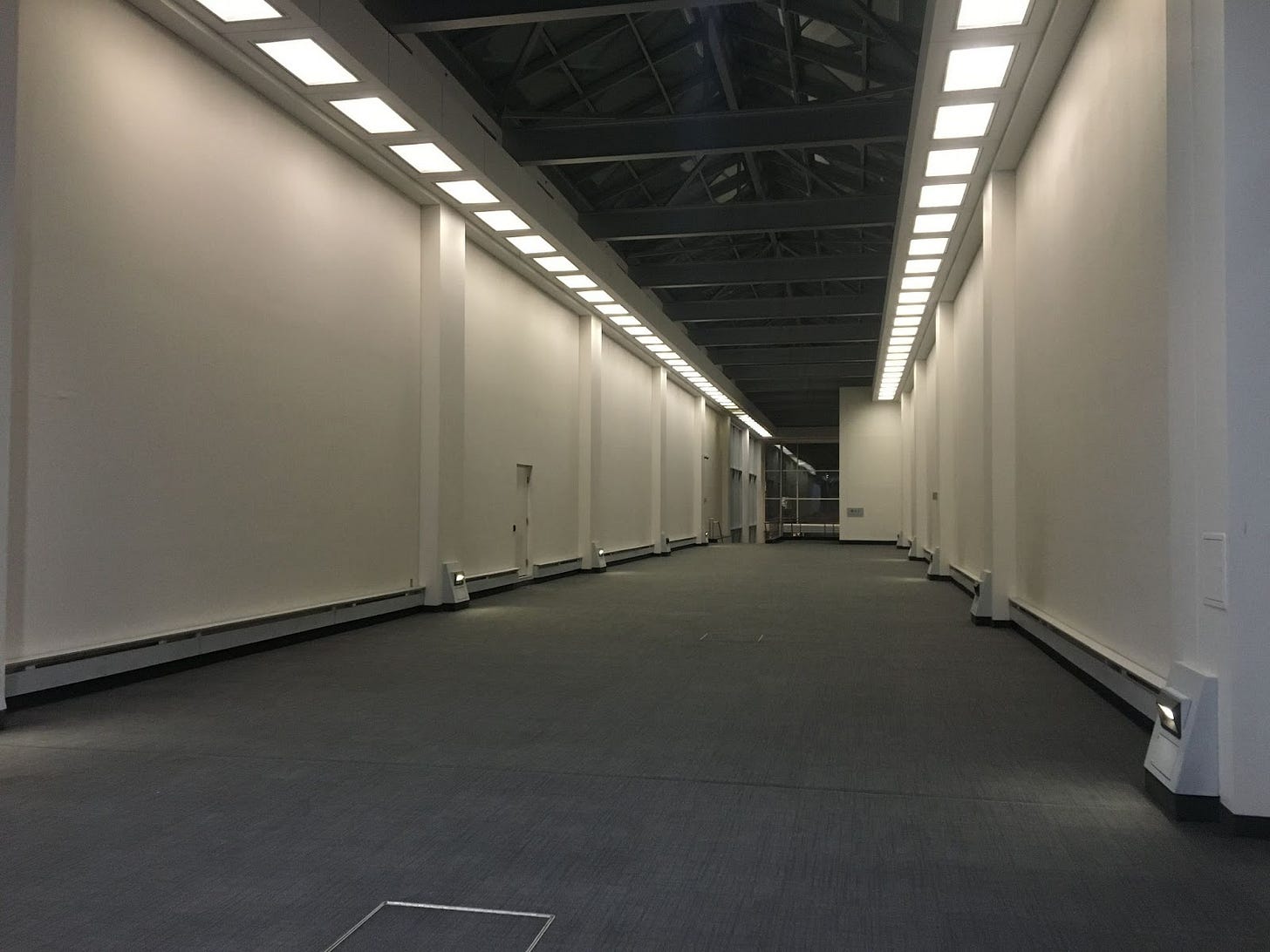
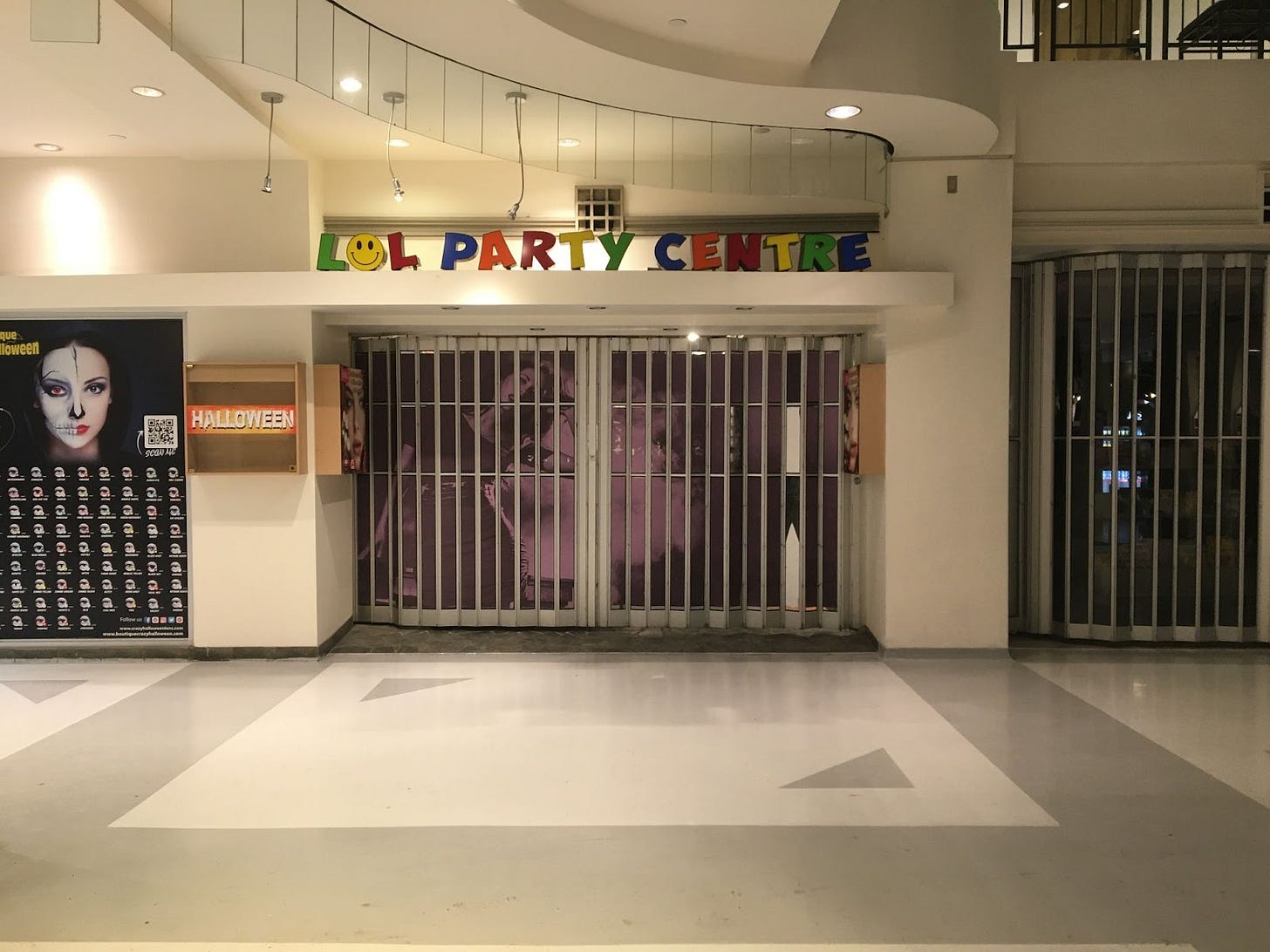
This is so funny and so absurd. Makes me think twice about wishing Boston had underground tunnels to avoid the winter
This is wonderful. "Why sully the pure potential of empty space with anything else?" indeed. I didn't know they made real places so similar to the backrooms!